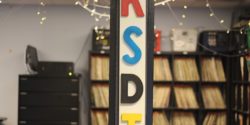At the end of a long day of travel, I found myself in the relaxing digs of streaming college radio station KSDT at University of California, San Diego (UCSD). In a quiet spot on campus, the station’s lobby door opens onto a pathway within the old student center complex. It’s near the student-run television station (Triton TV) and various socially-minded student services reside nearby, including a food pantry, LGBT Resource Center, Student Veterans Resource Center, Food Co-Op and a long-time collectively-run bookstore (Groundwork Books).
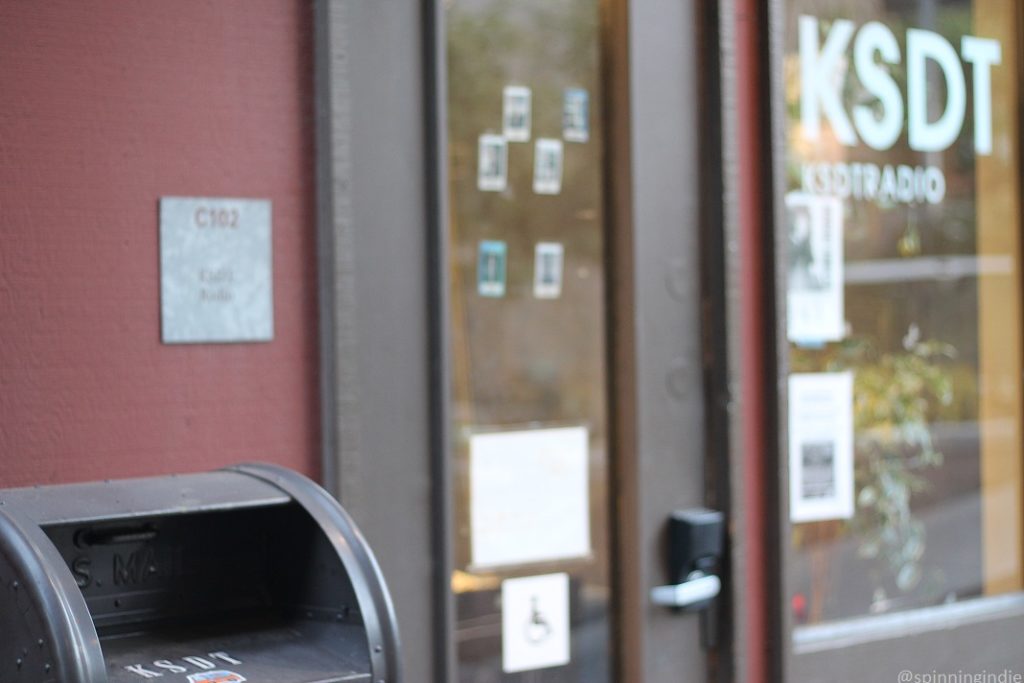
On a sleepy June evening, just a few days after graduation, Programming Director Adriana Barrios and Media Director Emanuel Castro Cariño greeted me in the KSDT lobby for a chat and a tour. The station was on a brief summer hiatus, with live shows returning in July. In the absence of regular DJs, KSDT was running an automated mix of music from a big hard drive dubbed “Satan.”
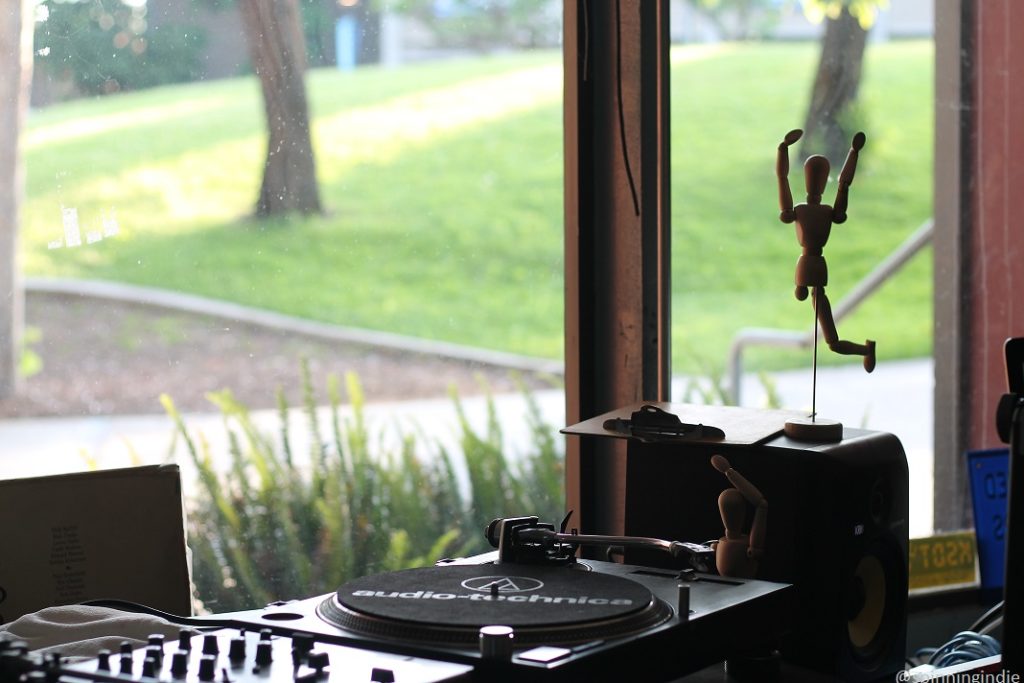
While there’s no set music genre for KSDT, the station does work to support independent, underground artists. Castro Cariño described the station sound as “eclectic,” praising its “weird audience” of listeners, including a fan in Poland who enjoys the station’s surf/garage show. Barrios said that while there are quite a few shows playing “indie pop” and “SoundCloud rappers,” she’s encouraging people to bring in genres that aren’t common at KSDT since they have so much available time on the schedule. “The more diversity in music, the better,” she relayed, summing up her programming philosophy.
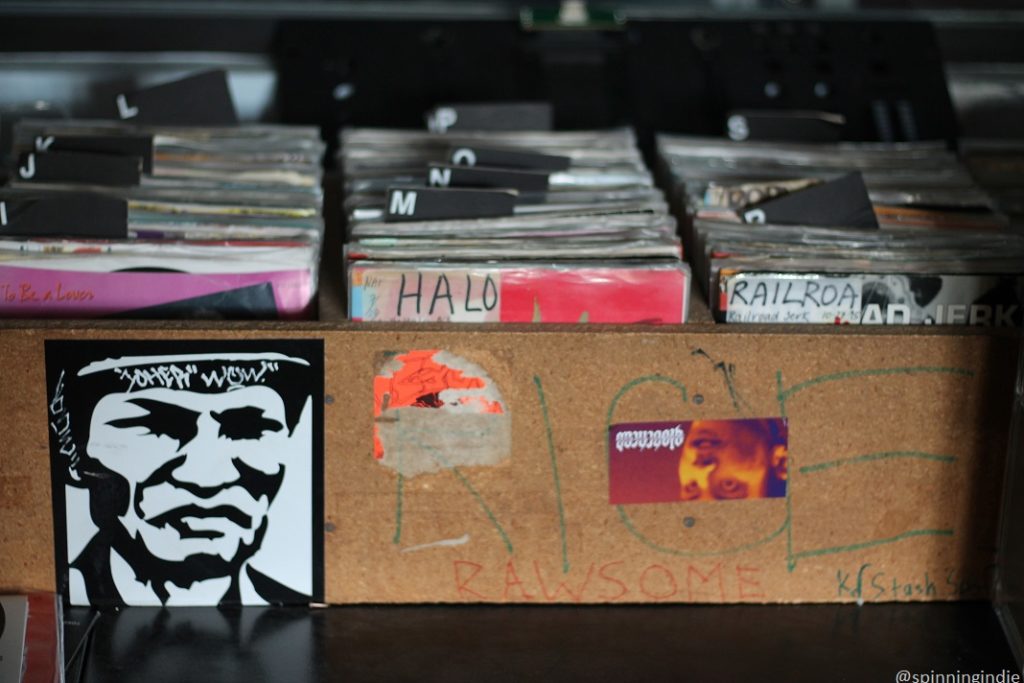
An enthusiastic fan of college radio, Barrios talked about her visits to stations in Boston and throughout California (thanks to University of California Radio Network conferences). Inspired in part by what she and other staffers have seen at other radio stations, KSDT is combing through its archives to uncover its 50+ year history.
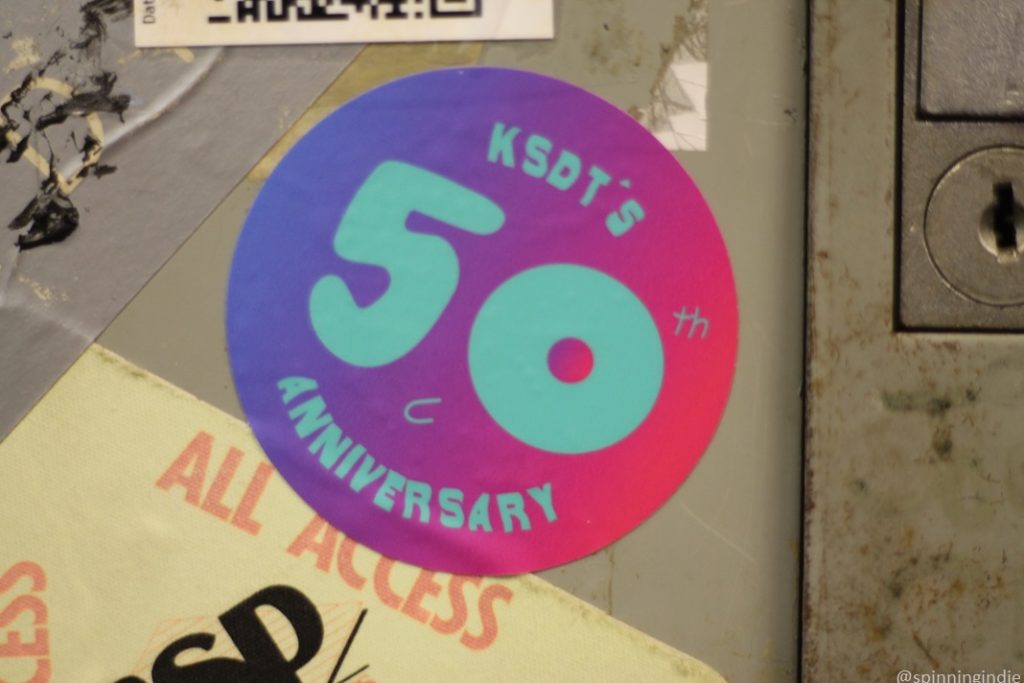
As is the case at many college radio stations, the current participants at KSDT don’t know too much about the station’s past. A decade ago, a 2009 UCSD Guardian article uncovered historical tidbits, namely pointing out that the station has never had a licensed over-the-air frequency. From the earliest days, KSDT operated over very low power, initially broadcasting to dorms in 1968 via AM carrier current. By 1973, the station was able to expand its reach to the broader San Diego community thanks to cable FM.
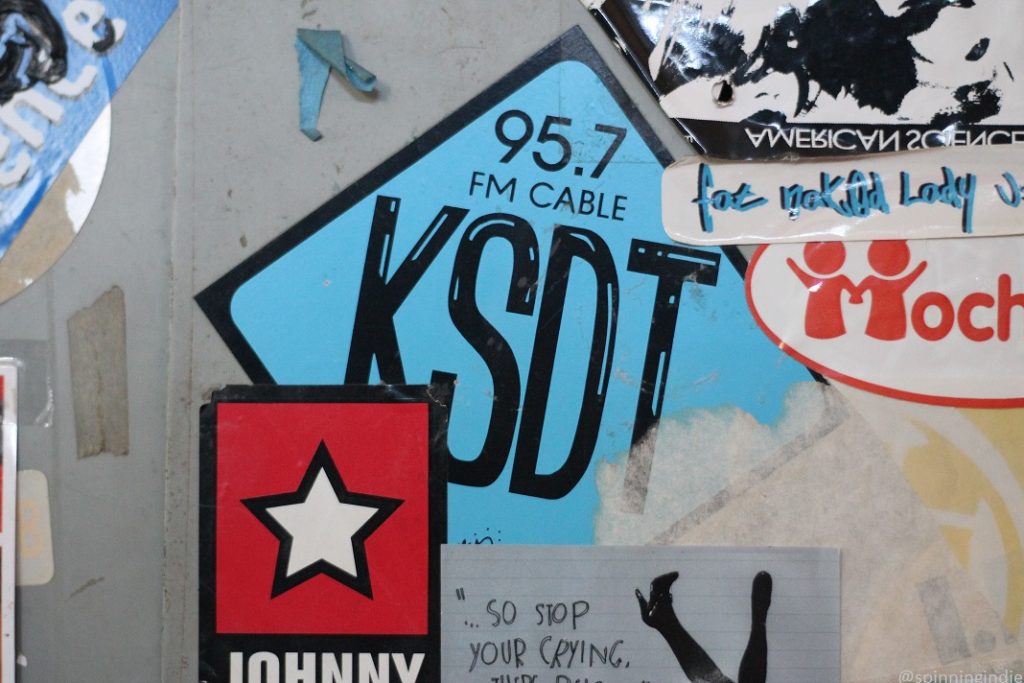
A 1987 Los Angeles Times article pointed out that KSDT “…has a potentially massive listening audience. You can pick it up at 95.7 on Cox Cable FM, 95.5 on Southwestern Cable FM.” The L.A. Times explained that cable FM was a service utilized by a small percentage of cable customers in 1987, stating, “A spokesman for Cox said a lot of people just plain miss cable FM. Out of 278,000 Cox subscribers, only 3,000 get the FM service. He, of course, would like a higher number, as would KSDT. (It costs $3.95 a month.) KSDT reaches only a few dormitories, wired to receive the signal through electrical outlets–you just can’t get it over the airwaves.”
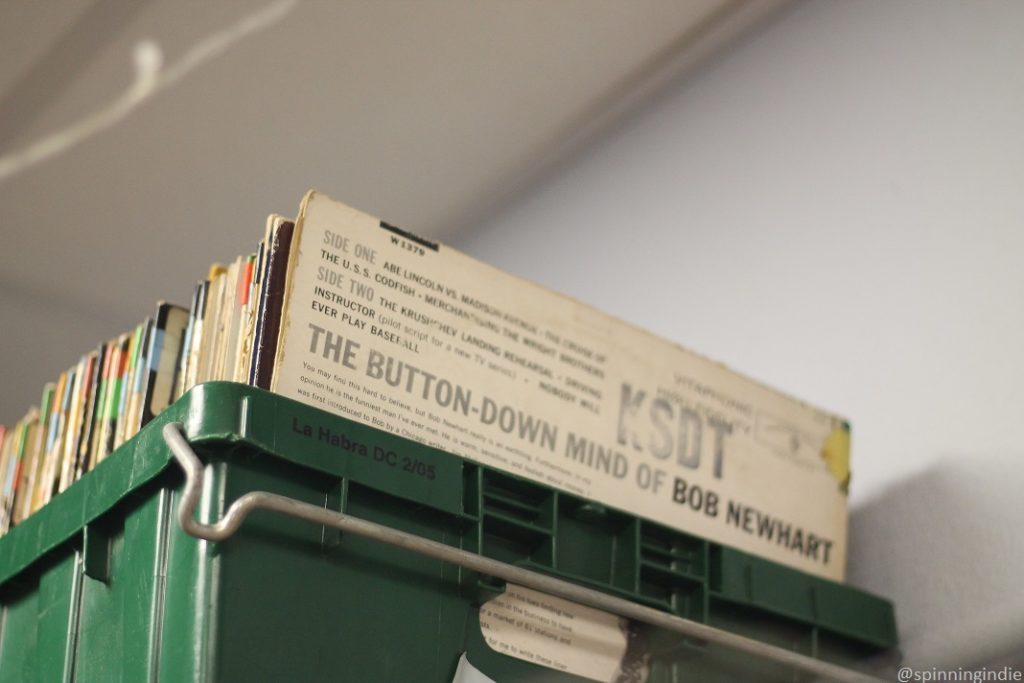
As they toured me through the station, Barrios referred to vintage KSDT stickers emblazoned with long-forgotten frequencies from the station’s cable FM and AM carrier current days. She and Castro Cariño also pointed out file cabinets containing historical documents and reel-to-reel audio tapes housed in the station’s music library.
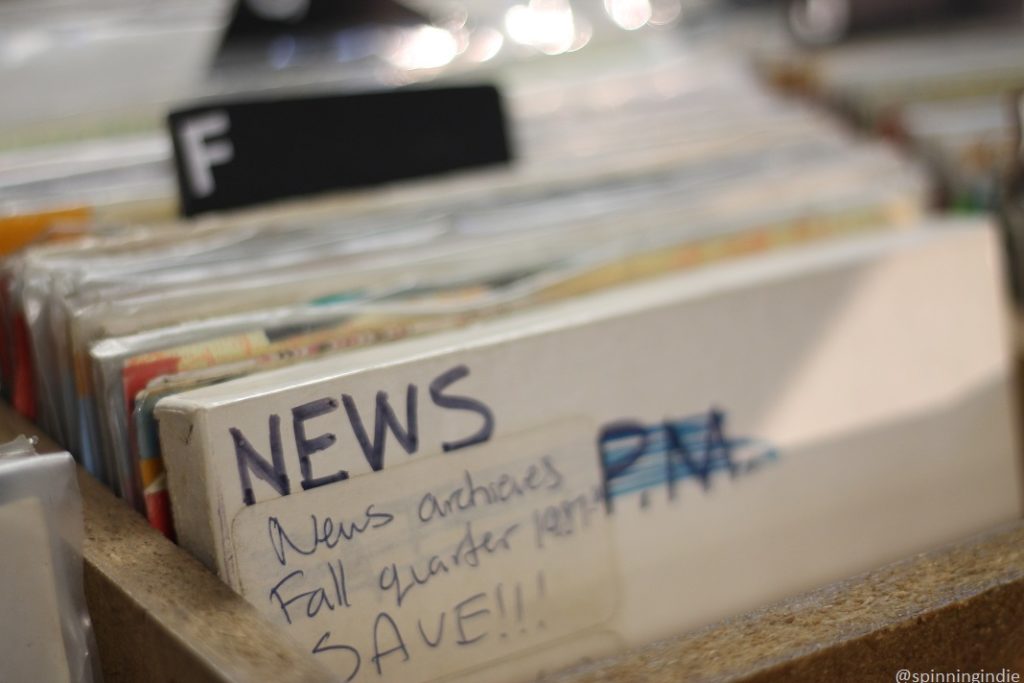
Barrios shared that KSDT is in the process of recovering its history by going through files and piecing together the story of the station’s past. As for the rationale, she opined that while KSDT is certainly looking ahead to its future, they also want to make a conscious effort to ground themselves in where they’ve come from.
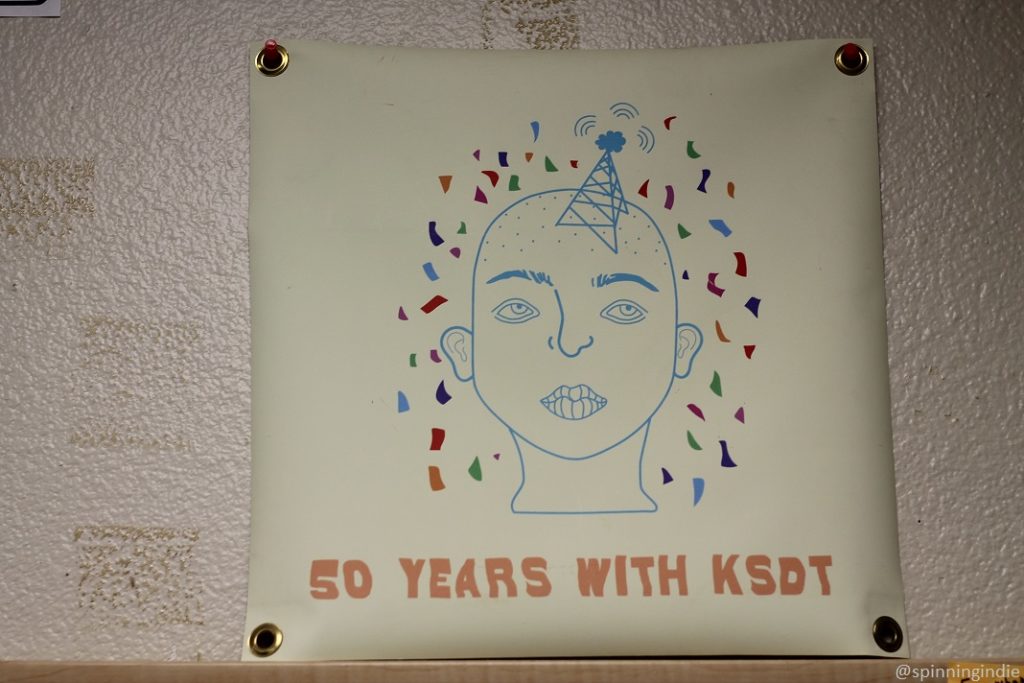
It’s a group effort, with several folks at the station interested in delving into the station’s archival material, including video. KSDT’s Winter 2019 ‘zine even featured record reviews of some LPs from the KSDT library dating back to the 1970s and 1980s. Barrios would also like to work on engaging with KSDT alumni is a more significant way and creating a plan for how to involve alumni DJs was on her summer to-do list.
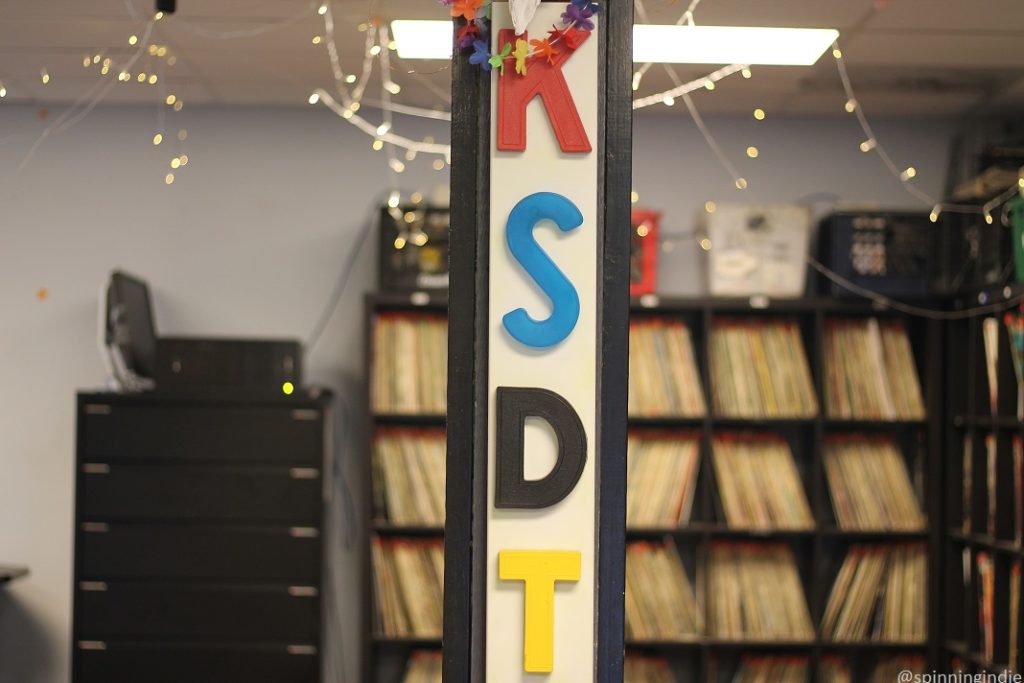
Just past the lobby, KSDT’s spacious on-air studio has a large window overlooking a patio, with picnic tables and an eatery nearby. When broadcasting, speakers outside the studio beam the KSDT stream to passersby. Within the studio, there’s the requisite broadcasting equipment and the surrounding walls and shelves hold the recently alphabetized vinyl LPs, 7″ records, and even some vintage reel-to-reel tapes.
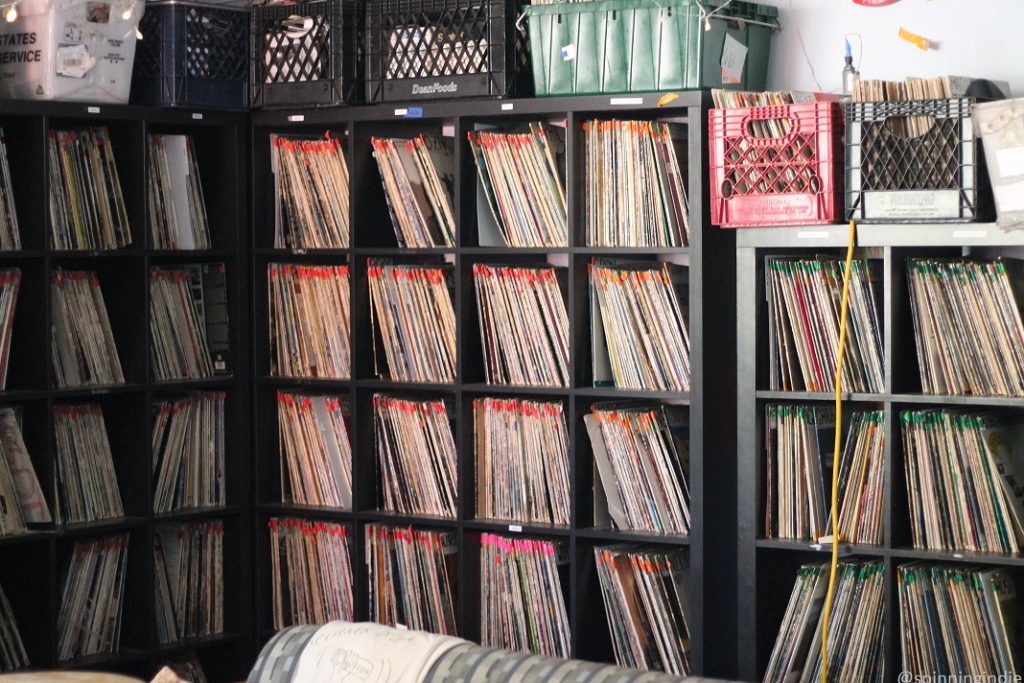
The studio has another window overlooking a small office (with plenty of sticker-covered surfaces) as well as a roll-up door/window that can be raised to create an open expanse between the lobby and the studio. A short hallway leads from the lobby to a music practice room.
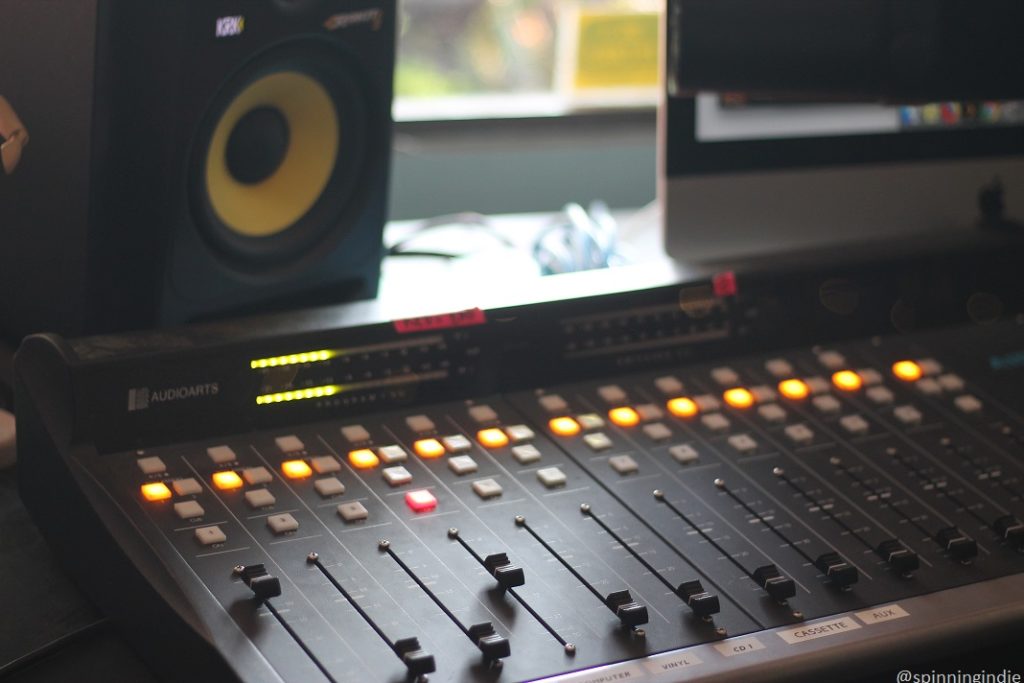
A student-run college radio station, KSDT has a staff of 12 students and around 100 DJs every quarter doing one-hour shows. Additionally, the station runs a music practice room with a membership of around 50 to 70 people. A unique project (I’m not aware of a practice room run by any other college radio station), I was told that the practice room is the only space on the UCSD campus outside of the music department that provides instruments and space for musicians to practice. Castro Cariño recounted that a few years back it was a “passion project” by the students who ultimately built the space.
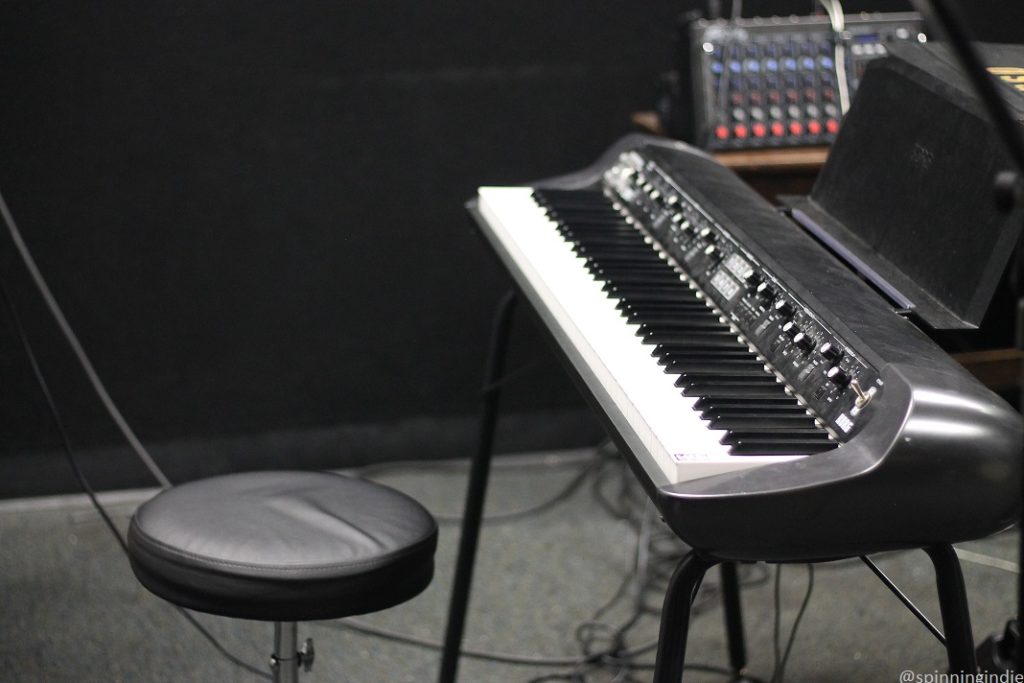
A haven for both musicians and audio engineers, the practice room is stocked with drums, a piano, guitar, various percussion instruments, amps, cables, and microphones. In addition to being a helpful space for artists, it also benefits the station by bringing musical talent in to KSDT.
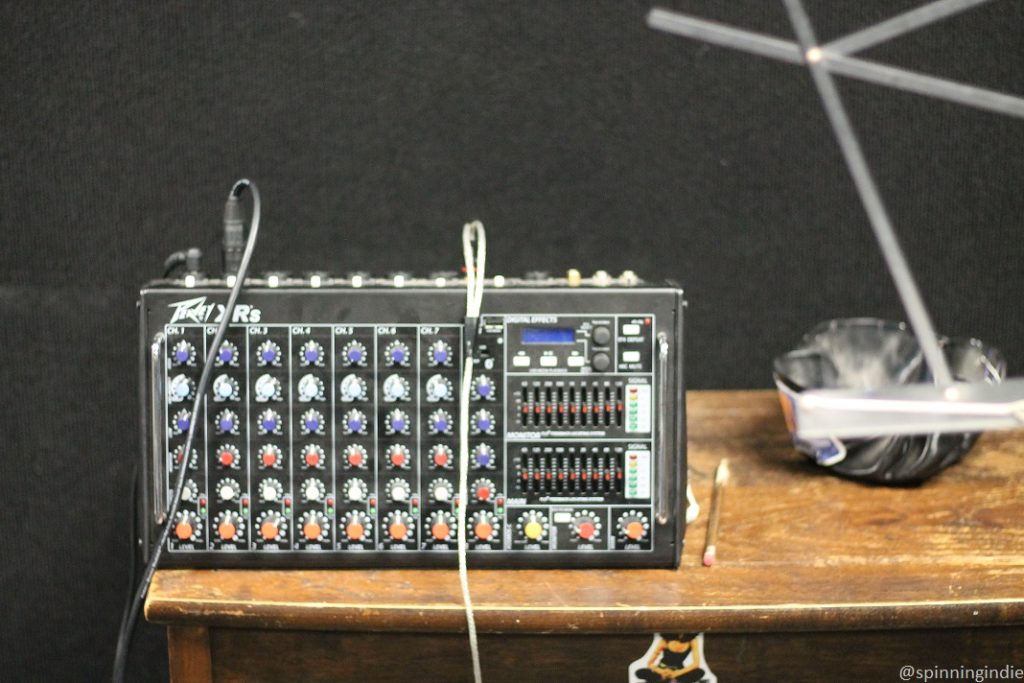
With summer break underway, Barrios was preparing for her senior year at UCSD while Castro Cariño was heading out into the world as a college graduate. At KSDT since his sophomore year, he said that while some might say it’s “bittersweet” to be moving on, he’s ready for the next phase and even has some ideas percolating on how to do community radio back in his home town. In part, he’d like to try to replicate the inspiring community that he found at KSDT. Reflecting back on his first moments at the station, he was struck by its “homey” feel, explaining that it was one of the places on campus where he felt “socially calm,” “at home” and “at peace.”
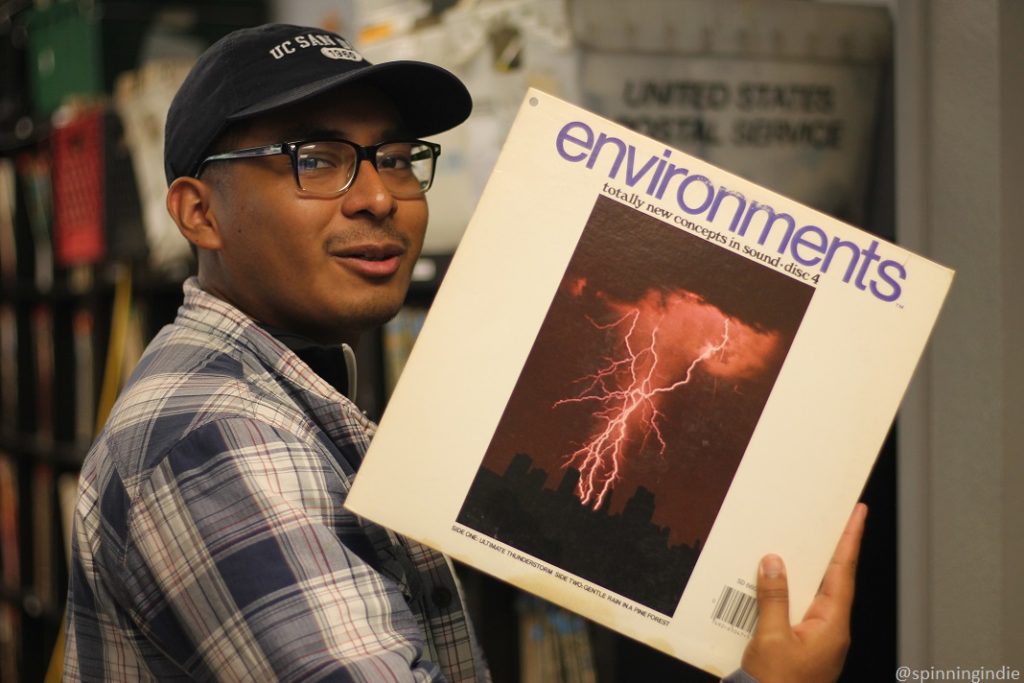
Barrios didn’t anticipate how important KSDT would become for her when she jokingly proposed hosting a show she called “Fake Indie, Real Talk” her first year of college. She told me that she didn’t know much about music and was intimidated by the seemingly music savvy DJs. Just wrapping up her second year at Programming Director when we met, she told me, “I’m so happy I applied as a joke,” adding that KSDT is “probably THE coolest thing on campus.”
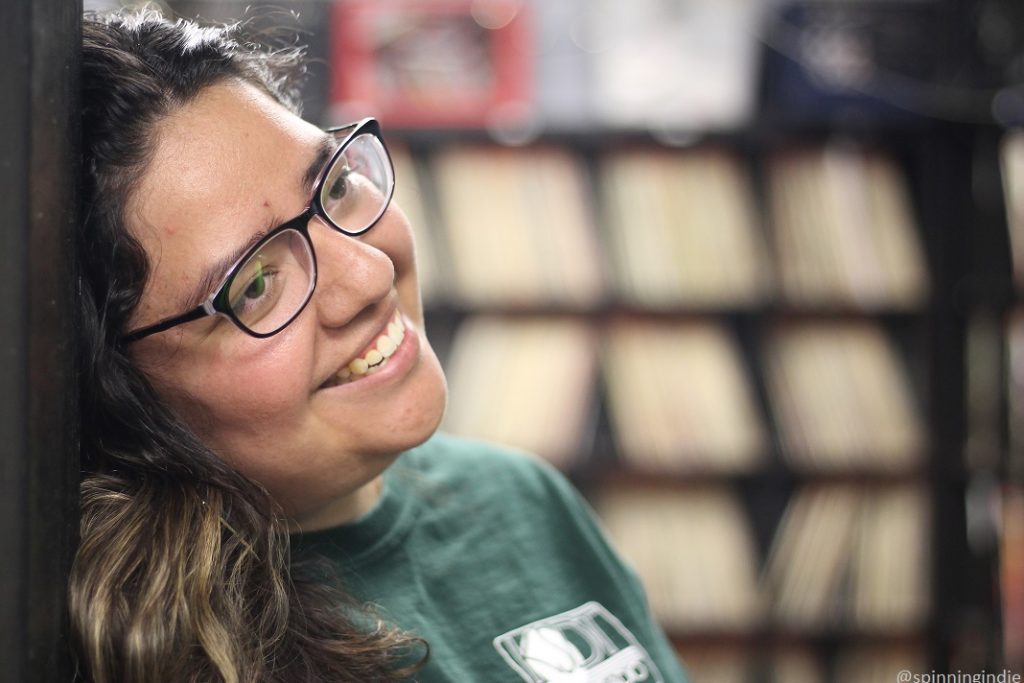
It’s also a place where people seem to really care about the work that they are doing both on and off air. Barrios started up a new “training quarter” program in fall, 2018 to provide more structure for new DJs. The components of the program include orientation (including training on how to spin vinyl records), DJ shadowing, and a series of non-prime-time solo hours on KSDT.
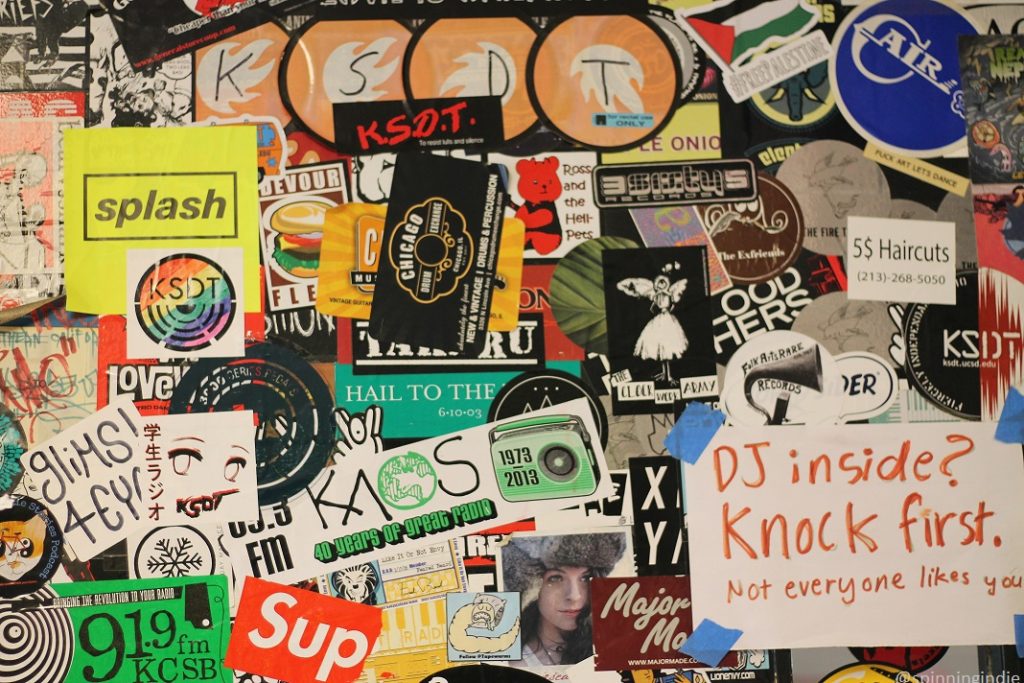
Additionally, as part of the effort to make their time in radio a bit more of an educational experience, KSDT has a programming review process in which interns listen to shows at a particular time of day and provide feedback to the DJs/hosts. Barrios explained, “It’s really hard to do radio when you’ve never done radio before.” New DJs are given suggestions on how to improve their shows across a range of areas. Barrios described the reviews as “holistic,” with Castro Cariño adding that much of what they are aiming for is helping on-air hosts to be better communicators.
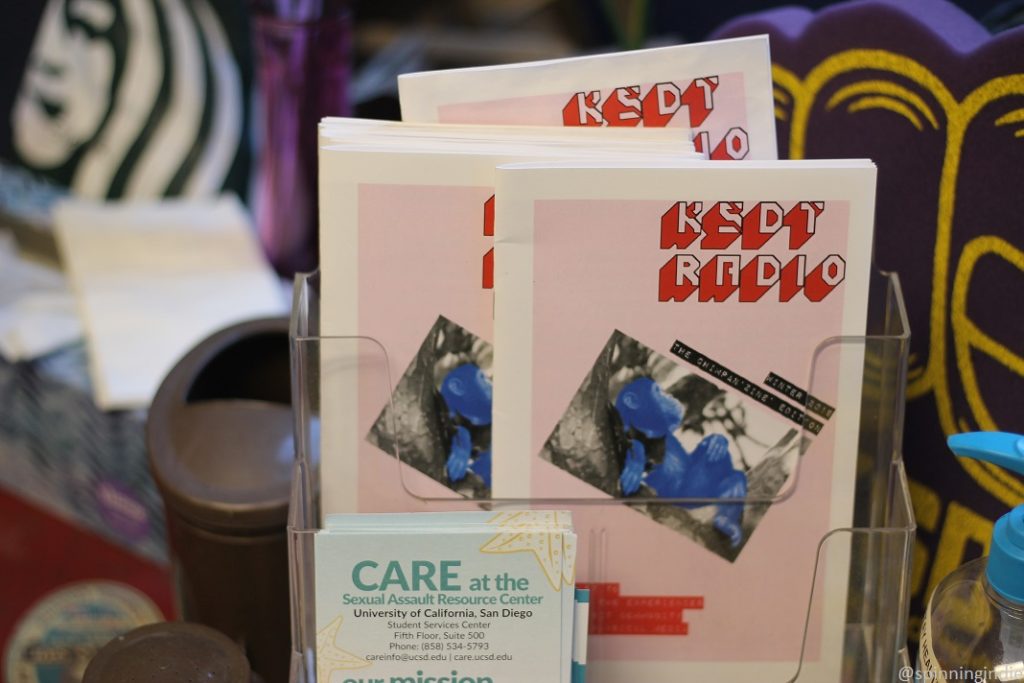
Both Barrios and Castro Cariño talked about how special it is to participate in college radio, citing being part of a creative community as a huge plus, especially at a university that they described as “STEM-focused.” It’s a sentiment that’s a common refrain at student-run radio stations and rings true for me as well: college radio can be an escape from the day-to-day stress of academics and a place to connect with fellow music lovers, artists, and soon-to-be radio nerds (in the best possible way).
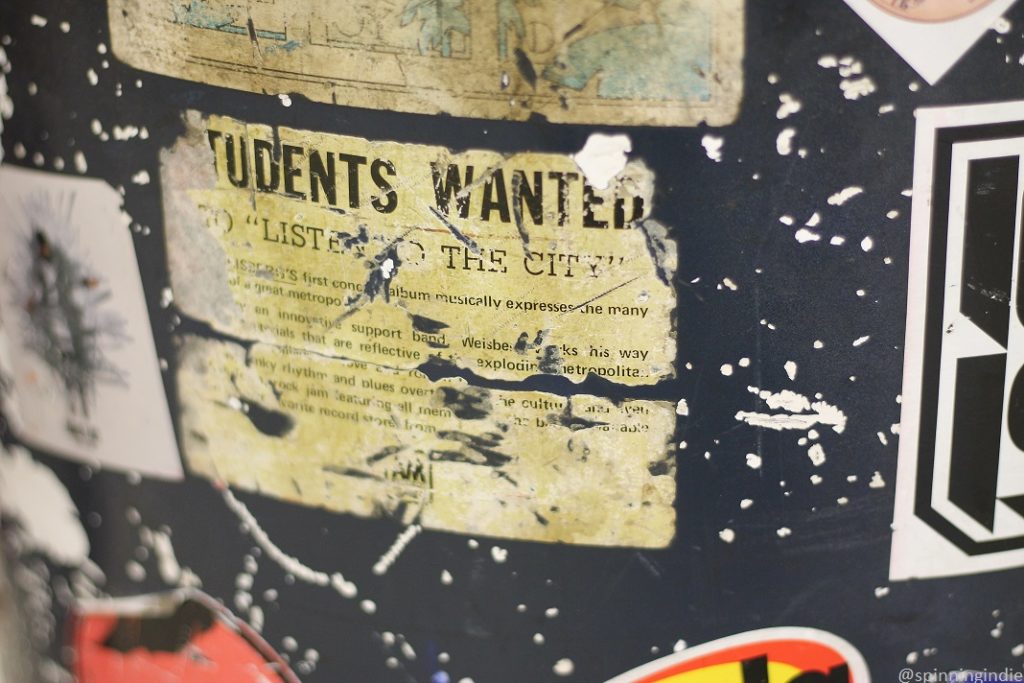
Thanks to Adriana Barrios and Emanuel Castro Cariño for spending a Tuesday night hanging out with me and schooling me about all things KSDT. This is my 162nd radio station tour report and my 107th college radio station tour. See my radio station visits in numerical order or by station type in our archives. I recap my San Diego-area college radio travels on Radio Survivor Podcast #202.

